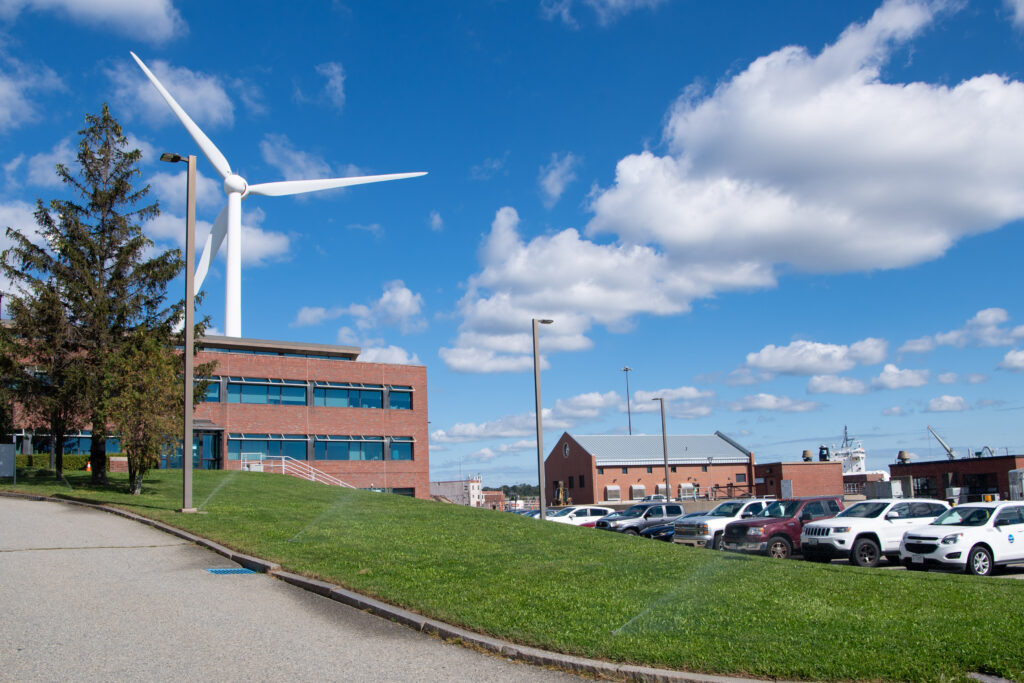
Field’s Point Facility
Field’s Point Facility Stormwater Management Plan
The Rhode Island Department of Environmental Management requires facilities with industrial activities that discharge stormwater to the surface waters of the State of RI to develop Stormwater Management Plans in accordance with the Multi Sector General Stormwater Permit. The NBC Field’s Point Facility Stormwater Management Plan can be found here.
Rain Garden – Rain gardens are shallow depressions in the landscape that typically include plants and a mulch layer or ground cover. In addition to providing increased groundwater recharge, they are expected to provide pollutant treatment. Rain gardens can be used in residential settings to accept runoff from a roof or other impervious surface. See this factsheet for more information.
Bioswale – A bioswale is typically a long, narrow channel planted with grasses and/or other native vegetation and may convey the storm-water to another LID such as a rain garden to bioretention area. The bioswale is designed to slow and capture stormwater runoff, filter pollutants and increase rainwater infiltration. Vegetation placed along the swale can benefit from the concentration of water in the area. See this factsheet for more information.
Pervious Pavement – Materials are designed to absorb stormwater, filter particulates and infiltrate the underlying soil to allow for effective groundwater recharge (see diagram). Options include pervious asphalt, pervious concrete, interlocking pavers, and plastic grid pavers. These methods allow rain and snowmelt to seep through the surface down to underlying layers of soil and gravel. In addition to reducing runoff from rain, the pervious pavements filter out pollutants and reduce the need for road salt. See this factsheet for more information.
Green Roof – These roofs are sometimes called a sustainable roofing system, eco-roof, rooftop garden, vegetated rooftop or sky garden – consists of layers of vegetation and specially engineered soil laid over a conventional roofing surface. Green roofs typically have a protective root barrier underneath the vegetation and soil, a standard roofing membrane, drainage systems and a structural support system. See this factsheet for more information.
Rip Rap – Rip Rap is lose stone pieces that is used on an embankment or slope to prevent erosion and also allows stormwater to percolate back into the ground.
Bucklin Point Facility
Bucklin Point Facility Stormwater Management Plan
The Rhode Island Department of Environmental Management requires facilities with industrial activities that discharge stormwater to the surface waters of the State of RI to develop Stormwater Management Plans in accordance with the Multi Sector General Stormwater Permit. The NBC Bucklin Point Facility Stormwater Management Plan can be found here.
The North Pond is a wet vegetated treatment system (WVTS). The piped storm water flow to the North Pond is pretreated through sediment forebays. A 15 inch high weir plate has been installed on the outlet control structure of the pond to provide the 0.386 ac-ft of storage. Plants within the wet portion of the pond are tolerant of standing water.
The South Pond is maintained as a modified infiltration basin. The piped storm water flow into the South Pond passes over rip rap at the discharge for outlet protection and to trap sediments. Flow continues through a vegetated bed designed to tolerate both wet and dry conditions. The outlet gate from the South Pond to the Seekonk River is kept in a closed position. Storm water is not discharged from this pond under normal conditions. In the situation of an anticipated sustained wet weather event, if the depth of the stored water in the pond is three feet or higher (to the top of the first tier of gabion basket), the outlet gate will be opened and the pond drained at low tide to provide storage capacity for the predicted storm water volume and to prevent flooding on the site.
